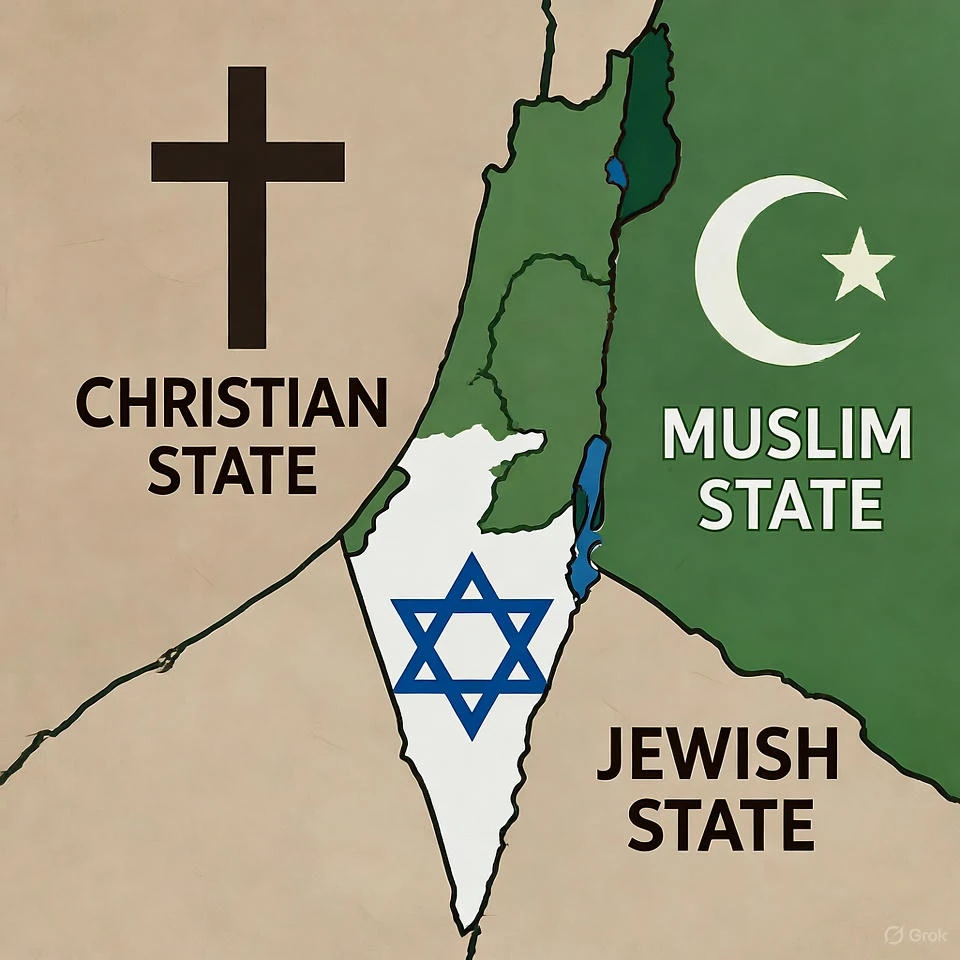Vice President JD Vance’s decision to forgo the traditional wall-kissing ritual at the Western Wall in Israel, choosing instead to visit the Church of the Holy Sepulcher, has sparked intense speculation about a broader geopolitical strategy. This symbolic gesture is being interpreted as a deliberate signal of a long-term vision for a three-state solution in the Holy Land, with one of those states envisioned as a Christian State of Jerusalem. The move underscores a growing frustration with the entrenched Israeli-Palestinian conflict, where decades of violence and failed peace processes have left Christians in the region increasingly vulnerable, caught in the crossfire between Muslim and Jewish communities. By prioritizing a Christian holy site, Vance appears to be laying the groundwork for a bold reconfiguration of the region’s political map, one that elevates Christian interests as a distinct and protected entity.
The rationale for a Christian State of Jerusalem stems from the persistent failure of Muslim and Jewish populations to achieve lasting peace, despite numerous diplomatic efforts. Christians in the Holy Land, particularly in areas like Jerusalem, Bethlehem, and parts of Lebanon, have faced marginalization and dwindling numbers amid the ongoing conflict. A dedicated Christian state, as some proponents argue, would provide a safe haven for the region’s Christian minority, preserving their cultural and religious heritage while shielding them from the volatility of the Israeli-Palestinian struggle. This vision aligns with a broader narrative that sees the establishment of a Christian state as a stabilizing force, potentially serving as a neutral buffer between Israel and a Palestinian state. The inclusion of Lebanon, with its significant Christian population, within the borders of this proposed state is a particularly ambitious aspect of the plan, aiming to consolidate Christian influence in the Levant under a single political entity.
The United States, positioned as the dominant power in what some describe as a techno-fascist Imperium, is seen as uniquely capable of enforcing such a radical restructuring of the region. With its extensive influence over the Levant, the U.S. could leverage its diplomatic, military, and economic dominance to carve out this new Christian state, potentially reshaping the Middle East’s geopolitical landscape. However, this proposal raises complex questions about sovereignty, religious coexistence, and the feasibility of integrating Lebanon into a new state without igniting further regional tensions. Critics argue that creating a Christian state could exacerbate divisions rather than resolve them, while supporters see it as a pragmatic response to a seemingly intractable conflict. Vance’s visit to the Church of the Holy Sepulcher may thus mark the beginning of a contentious but transformative push to redefine the Holy Land’s future.
JD Vance Skips Wall-Kissing Ritual, Signals Push for Christian State of Jerusalem in Three-State Solution
JD Vance Skips Wall-Kissing Ritual, Signals Push for Christian State of Jerusalem in Three-State Solution

DOJ Delays Full Epstein Files Release Despite Deadline
Compromised...

Lee Statue Replaced by Obscure Activist Johns in Capitol Swap
Richmond Will Burn Again?

Bongino Quits FBI: Chooses Family Over Impossible Reform Mission
Happy Wife, Happy Life! Or Something Like That…

November Inflation Cools to 2.7%: Surprise Win for Trump Policies
Inflation Nation!

Trump Declares America Revived in Festive Address: From “Dead” Under Biden to Golden Age Glory
Greatest Hits Keep ‘Em Coming!!!




